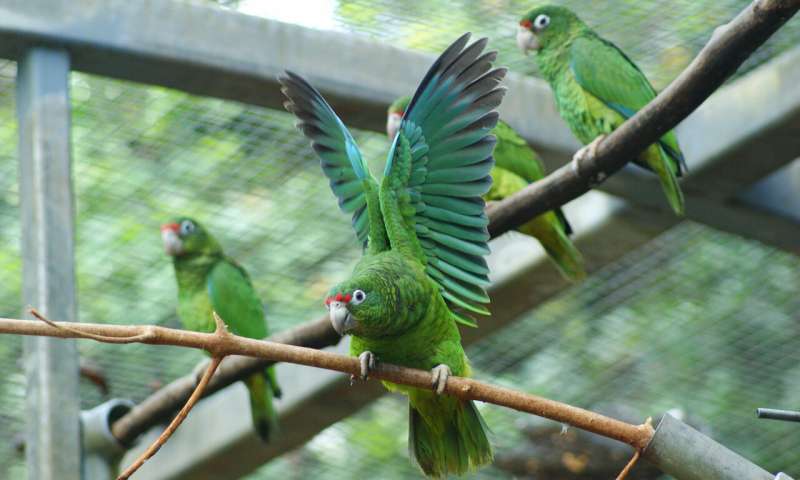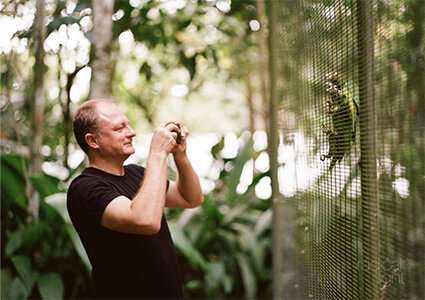Researchers use genome mapping to save rare parrot species

Researchers at Oakland University led an international effort to map and analyze the DNA of three Amazon parrot species, with the goal of preserving the birds from extinction.
Taras Oleksyk, Ph.D., assistant professor of biology, and Walter Wolfsberger, a Ph.D. student in biological and biomedical sciences, assembled genome maps of a Puerto Rican parrot, Cuban parrot and Hispaniolan parrot. All three species are under threats, including habitat loss and illegal trading.
The work involved 16 researchers from the continental U.S., Puerto Rico, Russia, Ukraine and Germany. The findings are published in a special issue of Genes, a scientific journal focused on genomics research. View the article here.
In the study, researchers used advanced molecular biology and computational techniques to create detailed genome maps. The maps were used to reconstruct the recent history of each species and calculate remaining levels of genetic diversity. Scientists have noted that a diverse gene pool is vital to the adaptation and survival of a species.
"As expected, these parrots do not have much genetic variation left," said Oleksyk. "This finding stresses the need for further conservation efforts."
According to the U.S. Fish and Wildlife Service, the Puerto Rican parrot is one of the 10 most endangered bird species in the world. Once numbering over a million, current estimates put the population at less than 500 individuals. The parrot has a long history on the island. It was first encountered during Columbus' second voyage in 1493 and plays a crucial role in the ecosystem, particularly in seed dispersal.

"These parrots are the gardeners of the island, and as they've gone, the trees that have been cut down can't come back," Oleksyk explained. "Also, the parrots can no longer stay there because the only place they can live is inside tree hallows, and to have a tree hallow you need an old tree."
In collaboration with other researchers, Oleksyk and Wolfsberger used genome mapping to support recovery efforts for these birds. Mapping and interpreting a genome allows scientists to identify individual birds so that captive breeding programs can be tailored to increase genetic diversity, and thereby maintain population viability. Researchers can also trace individuals to see how they're faring in the wild and to monitor illegal trading.
Beyond species conservation, genome mapping promises a number of other benefits. Once a map is assembled, researchers can use it as a starting point for mapping other genomes. Mapping also allows researchers to determine the locations and functions of genes.
"The natural history of life is written in genes," said Oleksyk. "If we want to understand that history, we need to read it. Genome mapping allows us to do that."
He added that commonalities between parrots and humans, such as speech, lifelong mating and longevity, have a genomic basis and are emerging as important research topics.
"One of the fundamental questions people want to know is how to live a long life," Oleksyk said. "By looking at how genomic differences affect parrots, in terms of longevity for example, researchers can understand how those genes work. The next step is to search for those genes on the human genome map and examine how genomic differences may influence longevity in humans."
More information: Sofiia Kolchanova et al. Genomes of Three Closely Related Caribbean Amazons Provide Insight for Species History and Conservation, Genes (2019). DOI: 10.3390/genes10010054
Provided by Oakland University




















